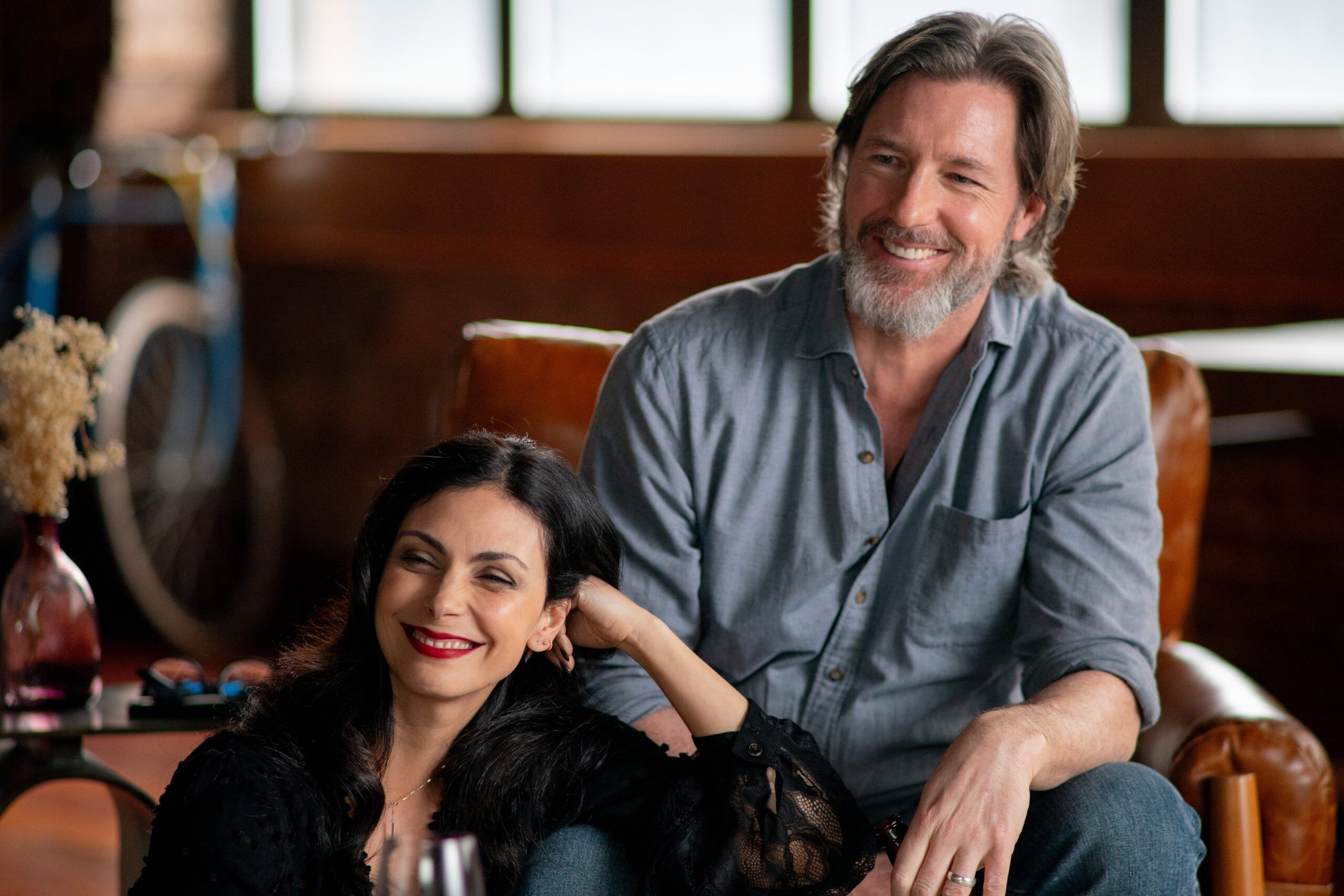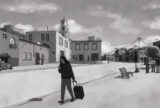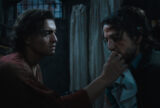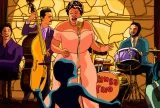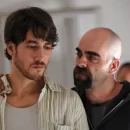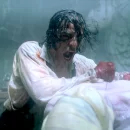10.10.2012 | By Mack Chico |

Within the dimly lit halls of DreamWorks Animation, past the character sketches lining the walls, inside the eccentrically decorated cubicles and offices is where a group of designers, animators and special effects gurus have spent the past four years bringing life to the Sandman. The dream-inducing folkloric figure, whose roots sprouted from European fairytales, is among the immortal icons featured in the 3-D computer-generated fantasy tale “Rise of the Guardians,” based on William Joyce’s charming book series, “The Guardians of Childhood.”
The bubbly Buddha-like appearance of the film’s Sandman, is remarkably faithful to Joyce’s illustrations. Yet creating a three-dimensional, wispy-haired Sandman with oh-so-magical powers provided several technical challenges that many of DreamWorks’ animation pros had never tackled.
“He is a very different kind of character,” said production designer Patrick Hanenberger of the character probably best known from Pat Ballard’s timeless 1954 song. “He is short. He is round. His body looks like it is made out of marzipan, and his hair looks like cotton candy. He is not someone who looks like he is as powerful as he is in our story, but he is the most magical of all the Guardians _ and he does not speak.”
“Rise of the Guardians,” which premieres Wednesday at the Mill Valley Film Festival near San Francisco and is set to debut nationwide Nov. 21, centers on a carefree Jack Frost (voiced by Chris Pine) joining an Avengers-style team of mythical figures who work together to protect the world’s children with their assortment of powers and gadgets.
Frost can command wintery elements with a magical staff, but he’s invisible to everyone else in the world except the other Guardians. He teams up with a mighty Santa Claus (Alec Baldwin) covered in tattoos, a speedy Easter Bunny (Hugh Jackman) with a chip on his shoulder, an overly enthusiastic birdlike Tooth Fairy (Isla Fisher) and the silly Sandman.
When it came to convey Sandman’s personality, the heavy lifting fell to the animators and effects gurus because the character stays totally quiet. He communicates only through facial expressions and body language, as well as with his nifty ability to craft imagery out of sand. (For example, when he’s puzzled, a sandy question mark unravels over his noggin.)
Instead of launching headfirst into production, the filmmakers spent several months simply conceptualizing the Guardians, paying particular attention to the amorphous Sandman. How would he look? What are his powers? How would he move?
Gabe Hordos, the film’s head of character animation, thought the extra time in the sand box ended up being a dream.
“We often get stuck with this problem where, as animators come on, we have many ideas that kind of pollute the main idea,” he said. “Because we had nine months before we started production, we were able to iron stuff down, so once we started, we had a great idea about the characters. They changed a little less, and we played their arcs more subtly.”
The film’s villain, a boogeyman named Pitch (Jude Law), fleeces Sandman’s ability to weave objects out of strands of sand. He substitutes Sandman’s glittery gold rendition for one that’s ominously dark, but the filmmakers didn’t just want a black version of Sandman’s dust. Finding a unique but balanced aesthetic became one of the film’s biggest challenges.
The team studied sandy effects from film franchises like “The Mummy,” “Harry Potter,” “Spider-Man” and “X-Men” but wanted something different. The solution actually came by accident when visual effects supervisor David Prescott noticed how chaotic an animation of one of Sandman’s streams appeared when head of effects Yancy Lindquist played it in reverse.
“It looked trippy,” said Prescott. “When you see something running backward, it’s less predictive. We’ve all seen smoke blowing and water running. You know where it’s going even if you’re not a scientist. When it’s backwards, it’s more interesting. My question for Yancy was, `How can you run it backwards, but make it look like it’s going forwards?'”
The answer was rendering most of the strands as if they were slithering in reverse amid a few lingering forward, providing an organic but creepy counterpart to the Sandman’s dreamy waves, an already a complicated effect when combined with other animations. Lindquist and his colleagues employed both new and existing technology to fuse it all together.
“The complexity isn’t in the sand itself but in how many different ways we use it,” said Lindquist. “Sandy makes unicorns and dinosaurs and sea horses and all sorts of things out of sand, but he also has these streams of sand, and he stands on a cloud of sand. It’s a lot. Hopefully, when you watch the film, you appreciate that, but it’s not something you notice.”


